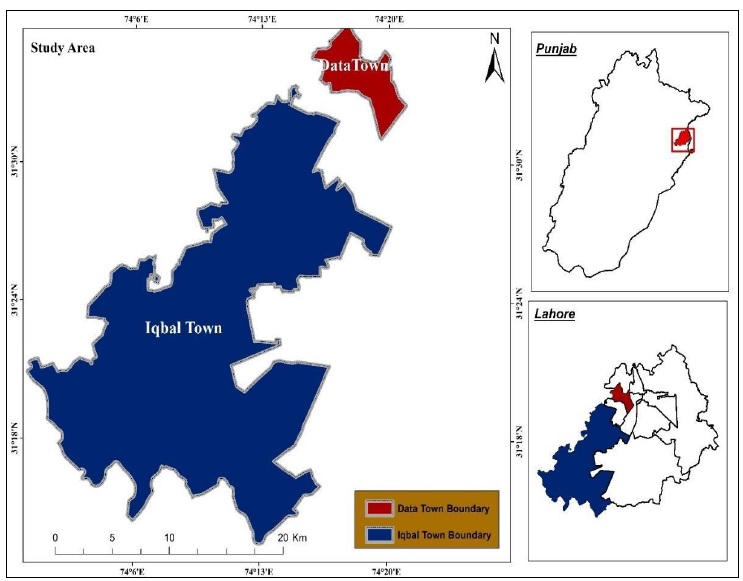Assessment and Mapping of Vulnerable Roads to Accidents Through Geospatial Techniques
DOI:
https://doi.org/10.33411/ijist/2020020406Keywords:
Road Traffic Accident (RTA), Two Wheelers , Vulnerable Roads , Hazards, Driving licensesAbstract
In Pakistan, about 36000 people were killed in road accidents in the year 2019. This study focuses on hazard assessment through geo-spatial techniques using both quantitative and qualitative research methodologies. An attempt was made to demarcate the most vulnerable roads to accidents for the years 2015 to 2019 through geospatial techniques. The data used in this research was collected through real time field observation using questionnaire-based survey. The results show that the ratio of reported accidents was higher in 2019 which was 53,979, in comparison to the number of accidents occurred in 2015 which were 19,073. It caused 478 casualities in 2019 in comparison to 308 in 2015. We found various reasons behind these accidents at both administration and individual levels e.g., about 67% increase was observed in number of vehicles from 2015 to 2019 whereas only 14% driving licenses were issues against this number. The most vulnerable roads where most of accidents occurred were Ferozepur Road, Ring Road, Mall Road and Jail Road whereas, in Iqbal Town, the roads were Canal Road, Multan Road, College Road and Raiwind Road. Geospatial techniques proved efficient for mapping the vulnerable roads to accidents.
References
Y. Debebe, "Road traffic accidents and human security in Addis Ababa," Master's Thesis, vol. 1, pp. 6-8, 2014
B. Dadashovaa, B. Arenas-Ramírez, J. Mira-McWilliams and F. Aparicio-Izquierdo, "Methodological development for selection of significant predictors explaining fatal road accidents," Accident Analysis and Prevention, pp. 82-95, 2016.
M. A. H. Talpur, I. A. Chandio and M. N. T. H. Ali, "Comparative Accidental Analysis of N-55 Jamshoro-Manjhand Section, Sindh, Pakistan," Sindh University Research Journal-SURJ (Science Series), vol. 49, no. 1, pp. 2-5, 2017.
WHO., "Facts on global road safety & Road traffic injuries.," World Health Organization, Geneva., vol. 10, pp. 5-6, 2019.
B. P. Y. Loo and T. K. Anderson, "Spatial analysis Methods of Road Traffic Collisions," New York: CRC Press, 2015.
M. Tahir, G. Macassa, A. Akbar, R. Naseer, A. Zia and S. Khan, "Road traffic crashes in Ramadan: an observational study," EMHJ, pp. 147-51, 2013
J. A. Bhatti, J. A. Razzak, E. Lagarde and L.-R. Salmi, "Differences in police, ambulance and emergency department reporting of traffic injuries on Karachi-Hala road, Pakistan," Public Health, vol. 118, p. 211–217, 2011.
A. Ghaffar, A. A. Hyder and T. Masud, "The burden of road traffic injuries in developing countries: the 1st National Injury Survey of Pakistan," Public Health, vol. 118, pp. 211-217, 2004.
F. Zaidi, "Daily Road Traffic Crashes Report," Rescue 1122, Lahore, 2019.
M. Talha.K, "Traffic accidents show no sign of slowing down," The Express Tribune, Lahore, 2017.
C. S. RASUL, "Punjab Development Statistics," Statistical Bureau of Punjab Pakistan, Lahore, 2019.
F. Ounia and M. Belloumia, "Spatio-temporal pattern of vulnerable road user’s collisions hot spots and related risk factors for injury severity in Tunisia.," Transportation research part F: traffic psychology and behaviour, vol. 56, pp. 477-495, 2018.

Published
How to Cite
Issue
Section
License
Copyright (c) 2020 50Sea

This work is licensed under a Creative Commons Attribution 4.0 International License.




















